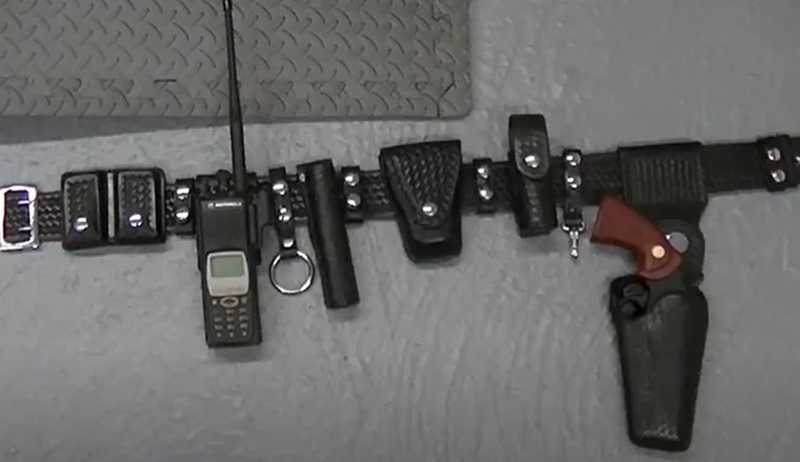
One of the things I did, to most kids’ delight, when I was “Officer Friendly” visiting schools, was to give them a tour of my “batbelt”. Even today, as a School Safety Officer, the question “What is all that stuff” is common.
As a walking piece of history, I can tell you that there is more to carry now than ever. When I started, I carried a revolver and ammo, a nightstick, a flashlight, some Mace, a radio, and a set of handcuffs. Those are still the essentials, but if you’ve noticed more cops wearing vests with more things hanging than a Christmas tree, you know there is more to carry.
Let’s start with the sidearm. My revolver held six rounds. In my double ammo pouch, I had an additional dozen bullets. To reload, I had to dump the loose rounds in my hand, eject the spent shells from the cylinder of my Colt Police Positive, and load each round. Under pressure, that is not an easy task. Before transitioning to a semi-automatic over a decade later, I acquired Speed Strips ™ that held the cartridges in a row, and allowed loading two at a time. Then I used the Speed Loader ™, a cylinder that held all six cartridges that could be injected into the revolver cylinder, but were bulky on the belt.
Transitioning to my Glock semi-automatic sidearm, I now had 18 rounds in the magazine and carried two spares with 17 rounds each. I went from having 18 available rounds with two reloads to 52 rounds. While most gunfights are resolved with just a few rounds, there are situations where more ammunition might be called for, especially in jurisdictions where assistance may be scarce. Therefore, many officers carry a second concealed weapon, or more than two “spare” magazines.
I replaced the old CN (Chloroacetophenone, known as tear gas) chemical spray (brand name Mace) after FBI tests confirmed the efficacy of OC spray – the OC stands for Oleoresin Capsicum. The tear gas formula relied on flakes suspended in a liquid. Sprayed near the eyes it causes irritation, blurred vision, pain, and breathing strain, hopefully disabling an attacker soon enough to keep them from doing harm. The challenge with CN is that it takes a little time to have an effect, and the flakes often contaminate the officer as well. OC’s effect is more immediate and sticks to the other person better than CN, reducing, but not eliminating cross-contamination.
My nightstick was my old Army MP wooden billy club until I started carrying the legendary PR24™ side handle baton, and then to a collapsible straight baton that was much easier to carry on my equipment belt. The PR24, in the hands of one properly trained, is a very effective tool for restraint and, when necessary, as an impact weapon. After its use in the Rodney King arrest in 1991 that was caught on video and replayed repeatedly, many agencies stopped carrying it as it was unfortunately associated with brutality.
Handcuffs haven’t changed much, but the addition of plastic zip-tie restraints allows officers to carry multiple sets of restraints tucked inside their equipment belts. These devices have a metal strip that reinforces them more than the zip ties available at the neighborhood hardware store.
From the thick “bulletproof” vest that was kept in the trunk of the patrol car, I was supplied with the more modern, thinner, and more flexible ballistics vest that was suitable for daily wear. During the years that I was a part-time officer and a little more aware of my age and fragility, I added an athletic cup and wrestler’s knee pads to my protective gear for vaulting over fences and kneeling on pavement.
Modern officers have added tourniquets and bleeding control packs, the now ubiquitous body-worn cameras, cell phones – personal and agency, and their electronic control weapon (usually TASER™) along with other miscellaneous gear choices. The load-bearing vest, which had been used only by tactical teams, has been proven to have back health benefits in addition to their capacity for more gear. Add to that the more common use of so-called tactical pants with their many cargo pockets, and today’s officer will have almost everything they need without humping back to their patrol unit for equipment.
The extra 30-40 pounds of protective and response gear may be a literal burden to carry, but for the citizens needing assistance, they’re happy to have what they need at the moment they need it.